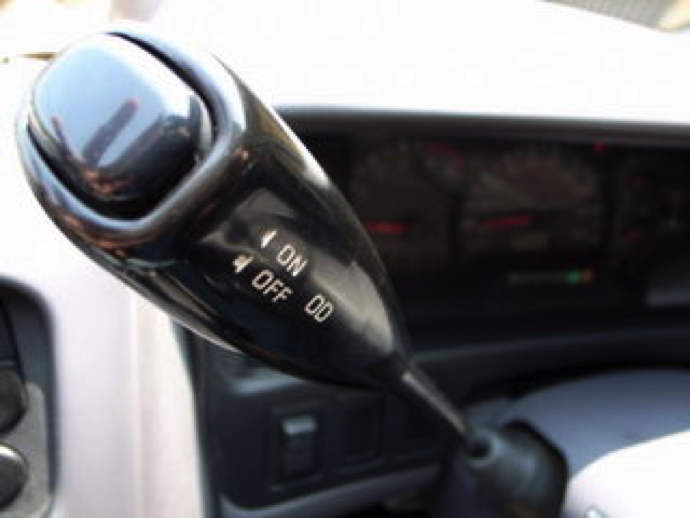When driving a vehicle with an automatic transmission, you may have noticed a button on the gear shifter labeled “OD off.” This button controls the overdrive gear in your car’s transmission and can be useful in certain driving situations. But what exactly does OD off mean?
First, let’s define overdrive. In an automatic transmission, overdrive refers to the highest gear ratio available. This gear ratio allows the engine to turn at a lower RPM (revolutions per minute) while maintaining the same speed, which can improve fuel efficiency and reduce engine wear.
So, when the OD off button is engaged, it means that the overdrive gear is not being used. This can be useful in certain situations, such as when towing a heavy load or driving in hilly terrain. In these situations, the engine may need to work harder to maintain speed, and using the overdrive gear could cause it to shift constantly between gears, which can be both inefficient and damaging to the transmission.
By turning off the overdrive gear, you can lock the transmission into a lower gear, which povides more power and torque to the wheels. This can help you maintain speed and control when driving in challenging conditions.
However, it’s important to note that using the OD off button when not necessary can actually decrease fuel efficiency and increase wear and tear on the engine and transmission. In normal driving conditions, you should leave the overdrive gear engaged to maximize fuel economy and reduce wear on your vehicle.
OD off means that the overdrive gear in your car’s transmission is not engaged. This can be useful in certain driving situations, but should only be used when necessary to avoid damaging your vehicle and decreasing fuel efficiency. It’s important to understand when and how to use the OD off button to ensure safe and efficient driving.
Should I Drive With OD On Or Off?
In most driving situations, it is recommended to leave the Overdrive (OD) on. This is bcause it allows your vehicle to use all of its available gears, including the highest ones. By doing so, the vehicle maximizes fuel economy and keeps the NVH (noise, vibration, harshness) at a more tolerable level. There are no downsides to having the OD on, and it is especially useful for highway driving. However, there may be situations where turning the OD off is necessary, such as when driving uphill or towing a heavy load. In such cases, turning off the OD can help improve acceleration and prevent damage to the transmission. It is important to consult the vehicle’s owner manual for specific recommendations and guidelines on using the OD.

Is It OK To Drive With Overdrive Off?
It is safe to drive with overdrive off if you maintain an average speed. However, driving with overdrive off may not provide the best driving experience and could also result in increased fuel consumption. Overdrive is designed to improve fuel efficiency by allowing the engine to maintain a lower RPM (revolutions per minute) at higher speeds. When overdrive is turned off, the engine runs at a higher RPM, whih can increase fuel consumption. It is recommended to use overdrive when driving at highway speeds to optimize fuel efficiency and reduce wear and tear on the engine. it is safe to drive with overdrive off, but it is not the most efficient way to drive.
What Does OD Off Stand For?
OD off stands for Overdrive Off. It is a feature found in some cars that allows the driver to turn off the overdrive gear. Overdrive gear is the highest gear in the transmission and is designed to provide better fuel economy by reducing the engine’s RPMs at highway speeds. Turning off the overdrive gear may be usefl in certain driving situations, such as when towing a heavy load or driving uphill, as it can provide more power to the wheels. When the OD off feature is activated, the transmission will not shift into overdrive gear, and the car will operate in a lower gear ratio. This may result in higher engine RPMs and reduced fuel economy. It is important to note that OD off should only be used in specific driving situations and should be turned off once the situation has ended to avoid unnecessary wear and tear on the engine and transmission.
How Do You Use Od Off?
To use OD off, you need to locate the button on your gear shifter labeled OD. Pressing this button will turn off the overdrive gear and disengage the torque converter lock. This can be useul in certain situations, such as driving uphill or towing a heavy load, as it can provide more power and control. However, it should be noted that driving with OD off for extended periods of time can decrease fuel efficiency and cause unnecessary wear and tear on your vehicle. It is recommended to only use OD off when necessary and to turn it back on once the situation has passed.
Conclusion
OD off simply means that the overdrive gear in your car’s transmission is turned off. This allows your vehicle to use lower gears, which may be necessary in certain driving situations such as towing or going uphill. However, it is important to note that leaving your OD on is recommended for most driving situations as it maximizes fuel economy and keps NVH at a more tolerable level. Turning off your OD should only be done when necessary and should be turned back on when the driving situation permits. understanding what OD off means and when to use it can help you optimize your driving experience and ensure the longevity of your vehicle.
